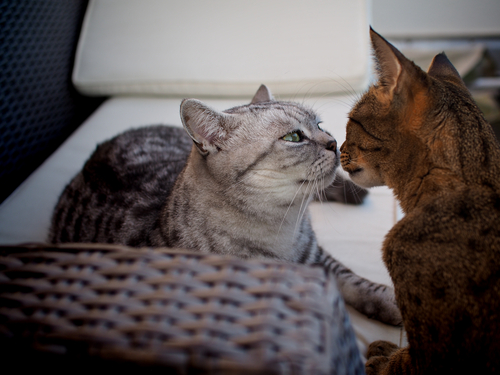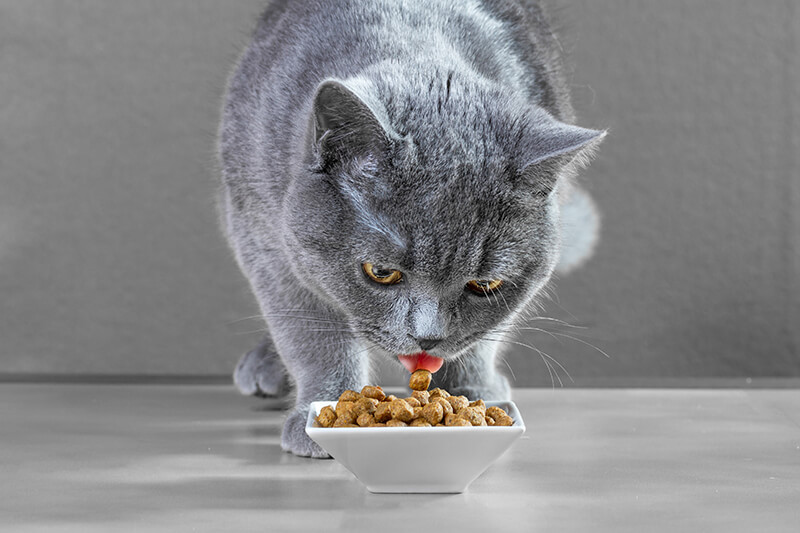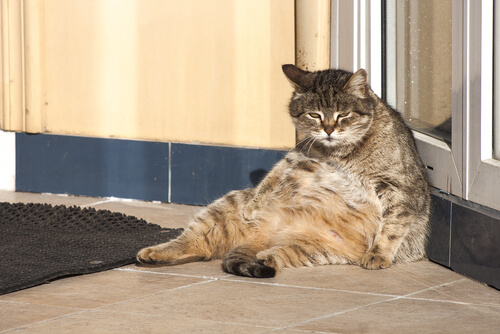Physical Changes in Cats After Castration

Understanding the changes in cats after castration is important because it helps an owner to accept the necessity of this procedure. Neutering male cats is a common practice to prevent accidental or indiscriminate breeding and reduce aggressiveness.
In addition, this measure eliminates some potential health risks, such as testicular cancer in adulthood. It can also prevent potential injuries caused by roaming and fighting with other male cats.
Another consequence of neutering is that it can induce certain physical changes in your pet. In this article, we’ll discuss some of the physical changes you may see in your cat after neutering.
We’ll alternate between the terms castration and neutering in this article – neutering is the neutral term for both sexes and castration refers to the removing of the testicles in male cats.
What are the long-term effects of castration?
Castration removes the male hormone-producing organs. These hormones, also called sex hormones, induce certain behavior in cats, specifically associated with sex drive and territoriality.
It is easy to assume that, if these messengers are missing, changes in the cat’s behavior will occur, as well as changes in its metabolism.
Will your cat get fat after neutering?
You have probably heard of the association between neutering and a tendency to obesity. The increase in weight of neutered males is considered to be a consequence of two factors: on the one hand, a reduction in energy expenditure and, on the other hand, a higher food intake if free will feeding is practiced.
Undoubtedly, unneutered male cats will be very active and will wander a lot, and they can wander for a day or more at a time. On these outings, they’ll cover a lot of ground looking to mate or patrol their territory, and they may not eat very well.
However, in cats after castration, this urge is eliminated and therefore he’ll no longer be as active. In this context, if intake is maintained and energy expenditure decreases, your pet may put on weight. Several studies have estimated that a reduction in intake of 13 to 27 percent is adequate to maintain pre-castration body weight.
Thus, the decrease in your cat’s physical activity after castration can potentially lead to weight gain.

The changes associated with neutering vary from cat to cat
A cat’s change in behavior after neutering can affect specific traits, so the decrease in physical activity varies from pet to pet.
For this reason, it’s difficult to predict exactly how your cat will respond to treatment. In general, spaying and neutering are recommended for all non-breeding animals.
With less roaming, fighting, and mating, what can you do to ensure your pet’s quality of life? You can reduce calorie intake and provide alternative forms of play and activity.
Are there endocrine changes in cats after castration?
So far, we know that adult male cats undergoing the procedure show an immediate increase in appetite. On the other hand, the direct effect of neutering on metabolic rate in felines has been examined with inconsistent results. These findings point to a multifactorial cause of weight gain.
It should be noted that behavior that has developed independently of hormonal influences, such as hunting, is not affected.

Currently, it’s unclear whether the primary drivers of weight gain associated with spaying or neutering are the increased intake or decreased energy expenditure.
Other physical changes: the decrease in urine odor
In unneutered cats, the smell of urine is very pungent. This odor is a consequence of the cat’s pheromones (such as felinin), the action of testosterone, and retrograde ejaculation that carries sperm to the bladder.
These urine odors are designed to optimize the emission of signals with which the cat makes territorial marking. In this regard, it’s believed that sterilization can eliminate urine-spraying activities in up to 87% of cats.
All cited sources were thoroughly reviewed by our team to ensure their quality, reliability, currency, and validity. The bibliography of this article was considered reliable and of academic or scientific accuracy.
- Alexander, L. G., Salt, C., Thomas, G., & Butterwick, R. (2011). Effects of neutering on food intake, body weight and body composition in growing female kittens. British journal of nutrition, 106(S1), S19-S23. https://www.cambridge.org/core/journals/british-journal-of-nutrition/article/effects-of-neutering-on-food-intake-body-weight-and-body-composition-in-growing-female-kittens/BD771084092FBE8C36F6F526AB2A21A1
- Allaway, D., Gilham, M. S., Colyer, A., Jönsson, T. J., Swanson, K. S., & Morris, P. J. (2016). Metabolic profiling reveals effects of age, sexual development and neutering in plasma of young male cats. PloS one, 11(12), e0168144.
- American Society for the Prevention of Cruelty to Animals. (sf). Spay/Neuter Your Pet. Recuperado el 21 de abril de 2023, disponible en: https://www.aspca.org/pet-care/general-pet-care/spayneuter-your-pet
- American Veterinary Medical Association. (sf). Spaying and neutering. Recuperado el 21 de abril de 2023, disponible en: https://www.avma.org/resources/pet-owners/petcare/spaying-and-neutering
- Kanchuk, M. L., Backus, R. C., Calvert, C. C., Morris, J. G., & Rogers, Q. R. (2002). Neutering Induces Changes in Food Intake, Body Weight, Plasma Insulin and Leptin Concentrations in Normal and Lipoprotein Lipase–Deficient Male Cats. The Journal of nutrition, 132(6), 1730S-1732S.
- Kanchuk, M. L., Backus, R. C., Calvert, C. C., Morris, J. G., & Rogers, Q. R. (2002). Neutering induces changes in food intake, body weight, plasma insulin and Leptin concentrations in Normal and lipoprotein lipase–deficient male cats. The Journal of nutrition, 132(6), 1730S-1732S. https://academic.oup.com/jn/article/132/6/1730S/4687652?login=false
- Oregon Humane Society. (sf). Reducing Urine-Marking Behavior in Cats. Recuperado el 21 de abril de 2023, disponible en: https://www.oregonhumane.org/reducing-urine-marking-behavior-in-cats/
- Vendramini, T. H., Amaral, A. R., Pedrinelli, V., Zafalon, R. V., Rodrigues, R. B., & Brunetto, M. A. (2020). Neutering in dogs and cats: current scientific evidence and importance of adequate nutritional management. Nutrition research reviews, 33(1), 134-144. https://pubmed.ncbi.nlm.nih.gov/31931899/
